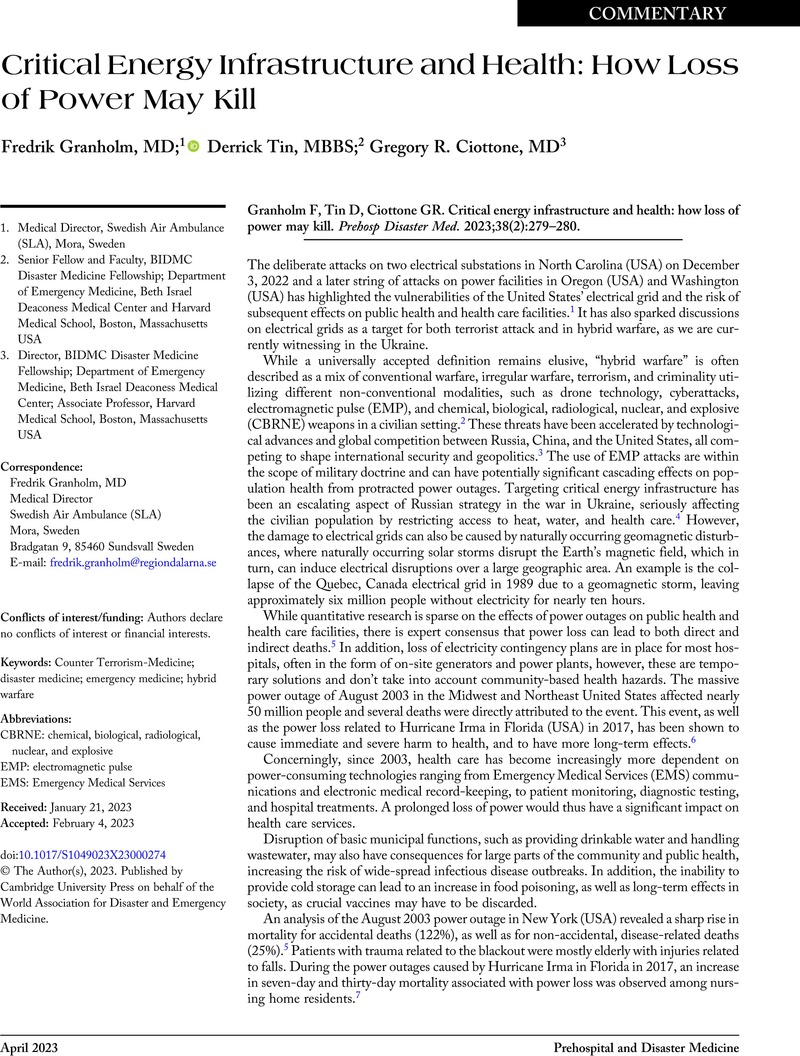Crossref Citations
This article has been cited by the following publications. This list is generated based on data provided by Crossref.
Granholm, Fredrik
Tin, Derrick
and
Ciottone, Gregory R.
2023.
The Complexities of Hybrid Warfare and the Impact on Tactical Emergency Medical Support.
Health Security,
Vol. 21,
Issue. 3,
p.
242.
Ramsey, Philip
Gingerich, Daniel
Best, Kelsea
Stockar, Stephanie
Duarte, Carlos
and
Clark, Jordan D.
2024.
Providing for occupant experience in optimized connected energy communities - A critical review.
Building and Environment,
Vol. 265,
Issue. ,
p.
111988.
Ptak, Thomas
Radil, Steven M.
Abatzoglou, John T.
and
Brooks, Julie
2024.
Coupling fire and energy in the Anthropocene: Deploying scale to analyze social vulnerability to forced electricity outages in California.
Energy Research & Social Science,
Vol. 112,
Issue. ,
p.
103519.
Barten, Dennis G.
Tin, Derrick
Granholm, Fredrik
Rusnak, Diana
van Osch, Frits
and
Ciottone, Gregory
2025.
Assessing Intent: Repetitive Strikes on Ukrainian Health Care Facilities.
Prehospital and Disaster Medicine,
p.
1.




